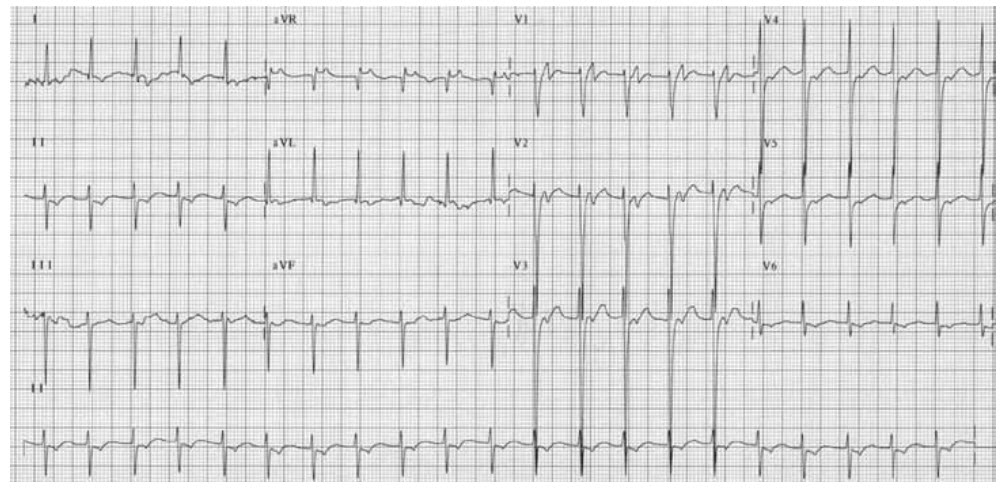Question 3#
You are asked to review a GUCH patient at 03:00 who has directly attended the ED with palpitations and breathlessness. On his arrival, the notes are available and document a diagnosis of tricuspid atresia with Fontan surgery. The patient appears anxious but well and tells you the symptoms started 8 hours previously whilst he was eating. He is well perfused with heart rate 130 bpm, BP 110/70 mmHg, and saturations of 97% on room air. There are no clinical signs of heart failure. The ECG is shown below.

The QRS morphology is consistent with baseline ECGs. The patient is on warfarin with an INR of 2.7.
What is your management strategy?
A. Support with O2 and IV fluids; look for underlying causes of tachycardia and especially sepsis; move to CCU and keep under close observation until morning
B. Give an adenosine bolus to diagnose the tachycardia; if an arrhythmia is proven, treat with oral beta-blocker and look for underlying causes
C. Give an adenosine bolus to diagnose the tachycardia; if an arrhythmia is proven, treat with intravenous amiodarone and look for underlying causes
D. It is likely that this represents a sinus tachycardia; reassure the patient; if routine bloods and CXR are normal, he can be discharged in the morning
E. This patient requires prompt DC cardioversion; adenosine can be attempted and IV fluids supplemented whilst making arrangements
Correct Answer is E
Comment:
Tachyarrhythmias in patients with Fontan circulation is a medical emergency. Although they can appear well, there is a risk of rapid decompensation. These patients depend on LA contraction and effective left-sided diastolic haemodynamics to maintain pulmonary flow. Dehydration and arrhythmia can be fatal and prompt return of sinus rhythm is paramount.